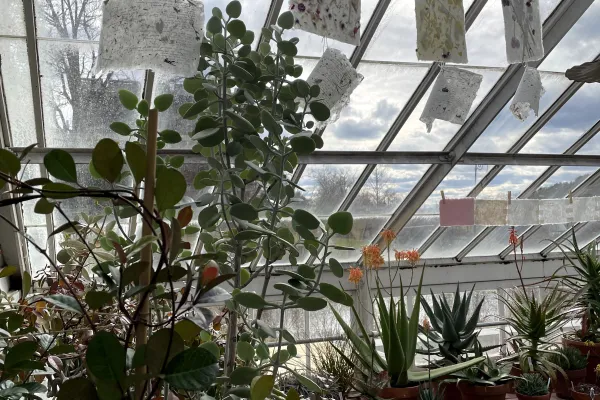Papermaking with Plants
Botanic Garden - Exhibit

Published February 1, 2023
February 1st, 2023 - April 15th, 2023
Featuring student work from the 2023 J-Term Course in papermaking, on display amongst the plants in Cool Temperate and Show House.
The course - Papermaking With Plants: Material Explorations - explored the materiality of paper through hands-on making, research, design, and interdisciplinary learning. Understanding paper's historic and artistic contexts, the environmental impact of and the science behind this material - which we so often take for granted - has enabled students to appreciate the dynamic nature and varied significance of paper. The class processed locally sourced plants from around Smith's campus, including from within Lyman Plant House, into pulp. Students learned how to use those fibers, along with commercially processed fiber, to make paper utilizing traditional western papermaking techniques. Students have created extraordinarily sculptural and personal work, and the final projects envision paper far beyond its conventional material uses.